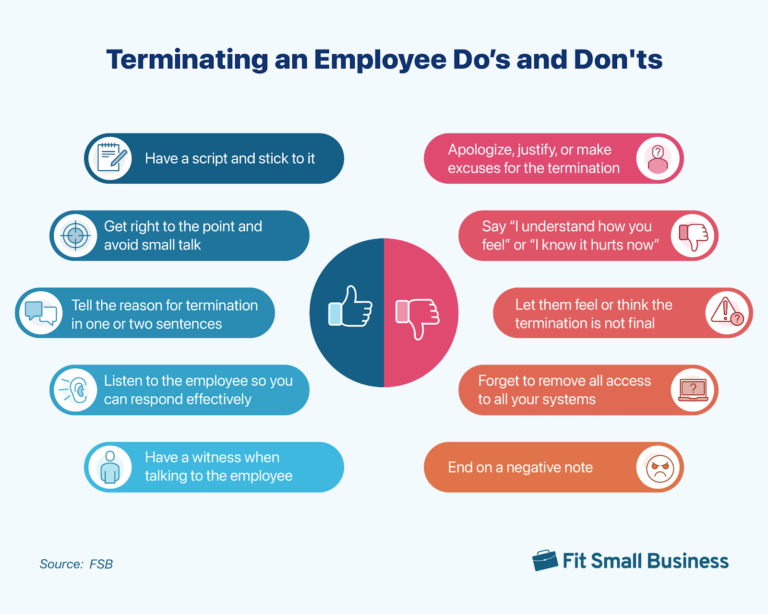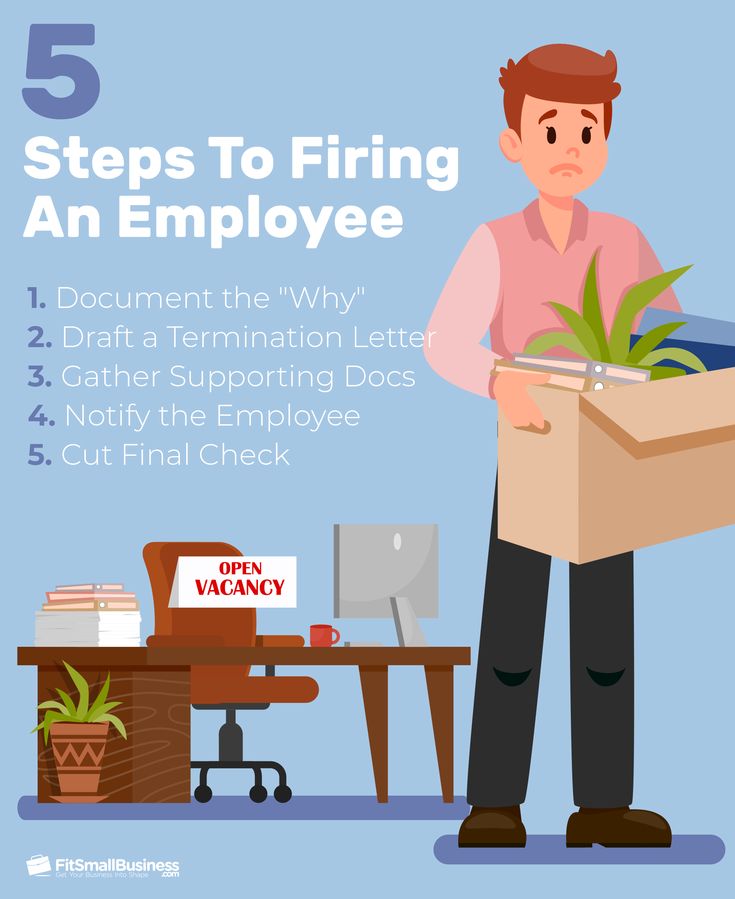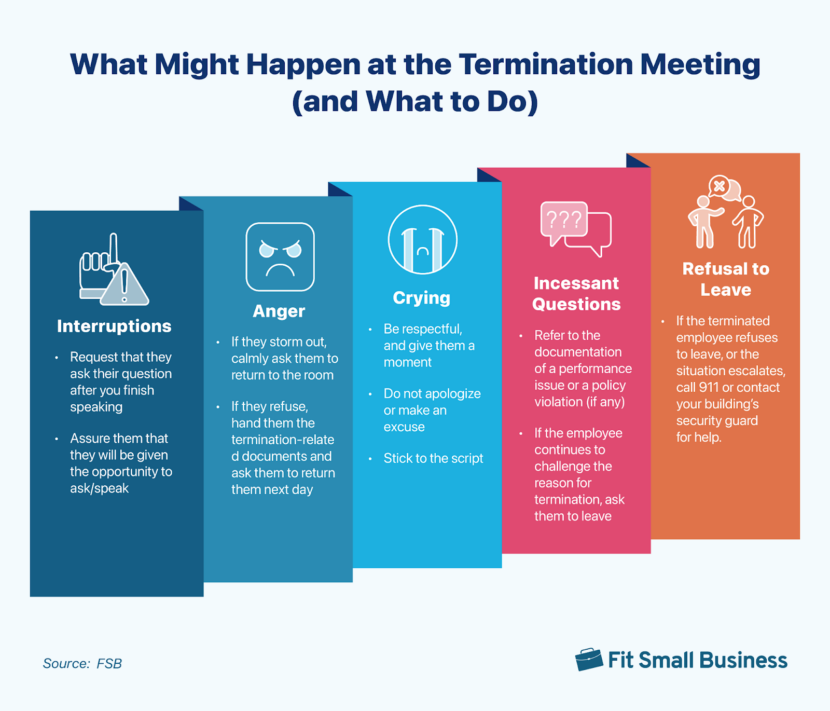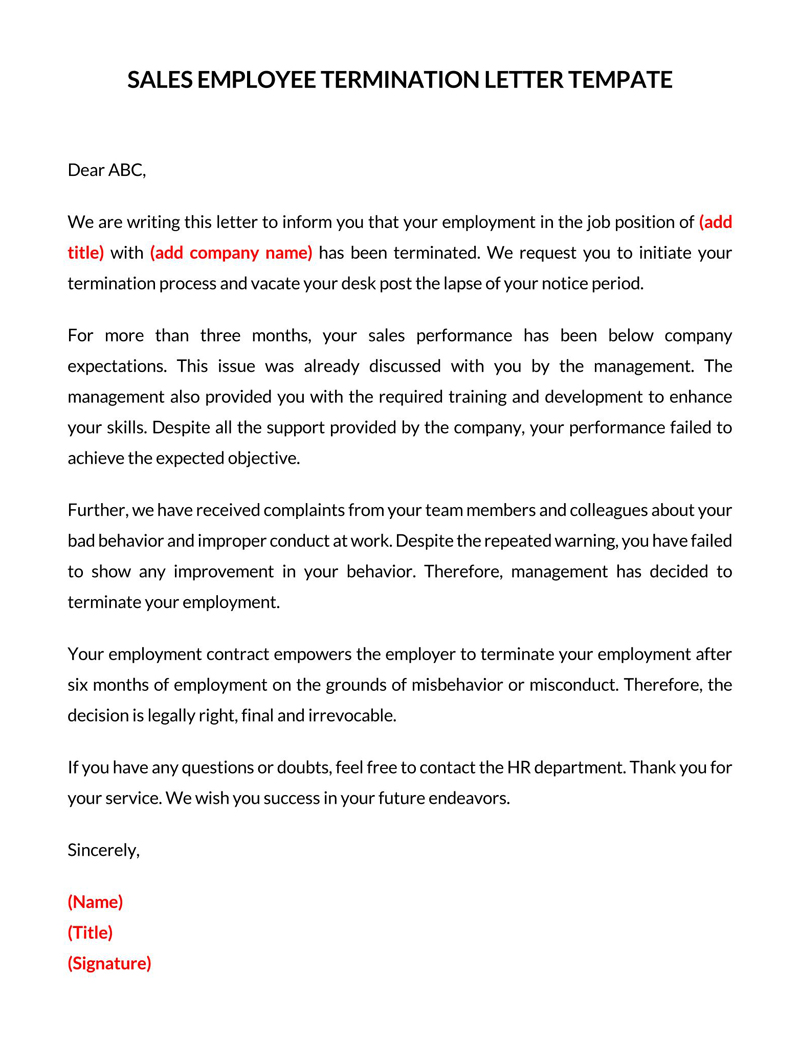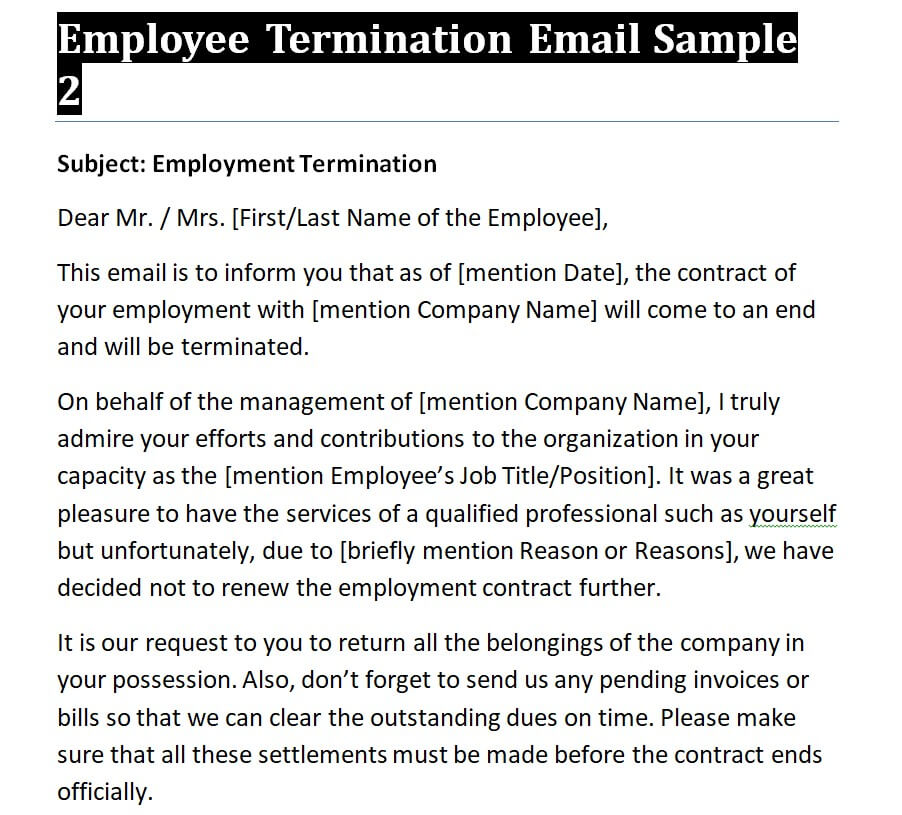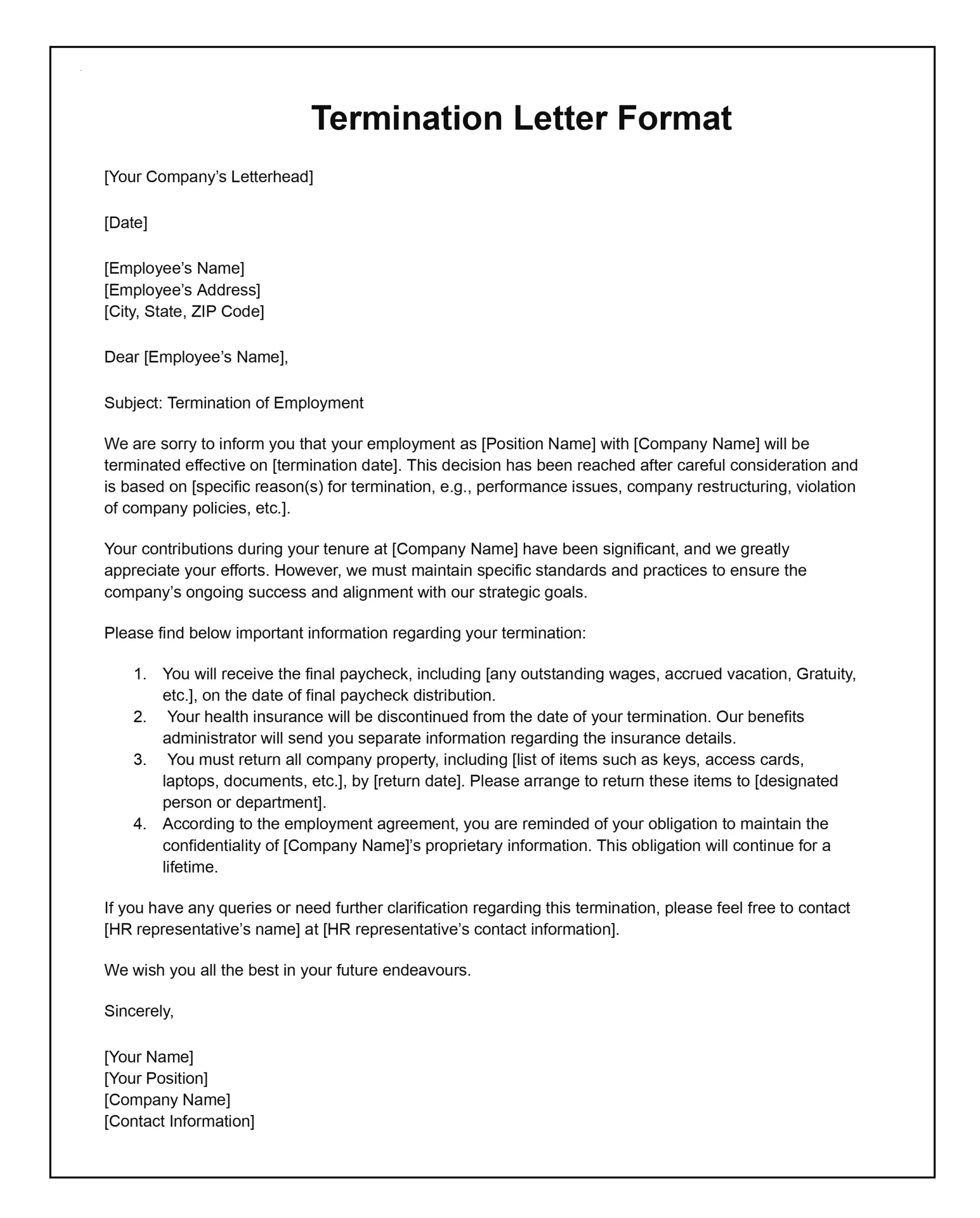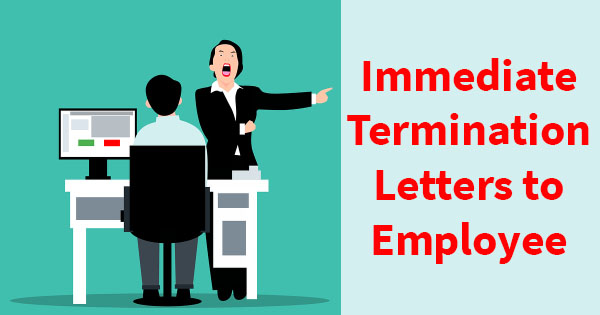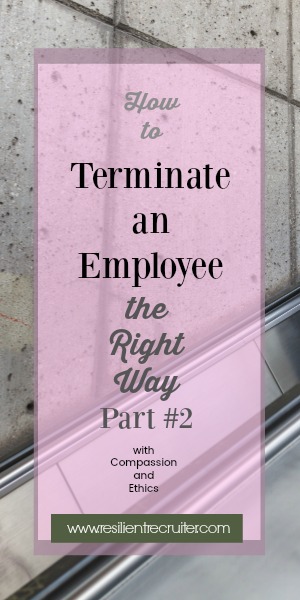The Best Way To Terminate An Employee

Firing someone is never easy. It's a task laden with legal, ethical, and emotional complexities. This article serves as a guide for first-time managers and business owners navigating the challenging terrain of employee termination. We’ll explore different approaches to termination, aiming for a process that is both legally sound and respectful to the individual involved.
Why "Best Practices" in Termination Matter
Employee termination isn't just about letting someone go. Mishandling it can lead to lawsuits, damage your company's reputation, and erode employee morale. A well-executed termination protects your business and demonstrates respect for your employees, even in difficult circumstances.
Following a consistent and fair process can significantly reduce the risk of legal challenges. Treating employees with dignity during termination maintains a positive company culture. This impacts future hiring and employee retention.
Comparison of Termination Methods
| Method | Price (Legal Fees & Admin) | Level of Legal Risk | Employee Morale Impact | Suitable For |
|---|---|---|---|---|
| Standard Termination | Low to Medium | Medium | Neutral to Negative | Performance issues, misconduct |
| Resignation Agreement (with severance) | Medium | Low | Neutral to Positive | Redundancies, restructuring |
| Performance Improvement Plan (PIP) followed by Termination | Medium | Low | Negative | Correctable performance issues |
| Termination for Cause | Low | High (requires strong documentation) | Negative | Gross misconduct, theft |
| Layoff | Medium to High | Low | Negative (can impact remaining employees) | Economic downturns, restructuring |
Detailed Reviews of Termination Methods
Standard Termination
The most common method involves informing the employee of their termination and providing them with the necessary paperwork. This method is appropriate for addressing performance issues or minor misconduct.
Careful documentation is crucial, showing the reasons for termination are valid and non-discriminatory. Consult with legal counsel to ensure compliance with all applicable laws.
Resignation Agreement (with severance)
This approach involves offering the employee a severance package in exchange for their resignation. This can be a less confrontational way to part ways and can reduce the risk of legal action.
The severance package typically includes a lump-sum payment and/or continuation of benefits. Agreements must be carefully drafted to ensure enforceability.
Performance Improvement Plan (PIP) followed by Termination
A PIP is a formal process to help an employee improve their performance. It outlines specific areas for improvement, provides support, and sets clear deadlines.
If the employee fails to meet the PIP's objectives, termination may be warranted. This method demonstrates that the employer made a good-faith effort to help the employee improve.
Termination for Cause
This method is reserved for cases of gross misconduct, such as theft, violence, or insubordination. Strong evidence is required to justify termination for cause.
The risk of legal challenge is high, so thorough investigation and documentation are essential. Consult legal counsel before proceeding with this type of termination.
Layoff
Layoffs are typically due to economic downturns or restructuring. Selection criteria for layoffs must be non-discriminatory and based on legitimate business reasons.
Provide employees with advance notice and severance packages where possible. Communicating the reasons for the layoff clearly and empathetically is crucial.
"Used vs New" Pros/Cons Breakdown (Existing Policies vs. Fresh Start)
Used (Existing Policies): Pros include familiarity and established procedures. Cons include potential for outdated or discriminatory practices.
New (Fresh Start/Policy Overhaul): Pros include the opportunity to create fair and compliant policies. Cons include the time and resources required for development and implementation.
Consider auditing existing policies for compliance and fairness. It is important to have a fresh start and develop new policies to avoid outdated or discriminatory practices.
Reliability Ratings by Method (Legal Risk)
Lowest Risk: Resignation Agreement (with well-drafted release), Layoff (with careful selection criteria).
Medium Risk: Performance Improvement Plan followed by Termination, Standard Termination (with strong documentation).
Highest Risk: Termination for Cause (requires irrefutable evidence).
Checklist: 5 Must-Check Features Before Implementing a Termination
- Legal Compliance: Does the termination comply with all applicable federal, state, and local laws?
- Documentation: Is there adequate documentation to support the reason for termination?
- Consistency: Are similar situations handled consistently across the organization?
- Fairness: Is the termination process fair and respectful to the employee?
- Communication Plan: Is there a clear plan for communicating the termination decision to the employee and any affected parties?
Key Considerations and Summary
The "best" way to terminate an employee depends on the specific circumstances. Key factors to consider include the reason for termination, the employee's performance history, and the legal risks involved.
Thorough documentation, legal compliance, and respectful treatment are crucial for any termination process. It is important to weigh your options and proceed with great care.
Call to Action
Navigating employee termination can be complex. Contact an employment law attorney to ensure compliance and minimize legal risks. Invest in professional training for managers on effective termination practices to maintain a legally sound and respectful workplace.

